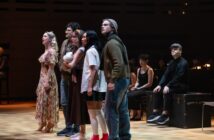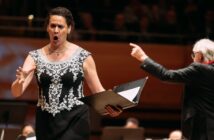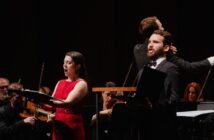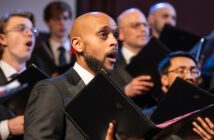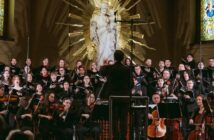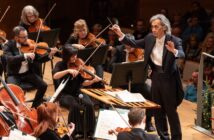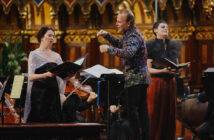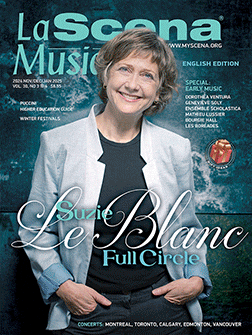Not many natives of California choose to winter in Canada, particularly when the sojourn involves 14 days of quarantine. Kent Nagano, recently named conductor emeritus of the Montreal Symphony Orchestra, gives every indication in the first of three webcasts from the Maison symphonique that he is happy to be back.
The program, recorded last week and available until March 30, follows the usual no-intermission formula of about 70 minutes of music expanded by interviews and, in this case, a hagiographic film tribute to the former music director and a formal expression of thanks from MSO chairman Lucien Bouchard. There is no mention of Nagano’s successor.
Well, his time will come. This month is dedicated to the former boss, who nurtured a late-mid-career enthusiasm for Beethoven with the MSO that resulted in several recordings. He has not lost his knack for eliciting lively detail while maintaining a texture that seems big-orchestra balanced rather than period-band coarse. There was plenty of smart contrast in the outer movements of the Second Symphony, which are among the most jubilant in the repertoire. If the Larghetto seemed a little brisk, it maintained a lyrical flow.
It was interesting that the conductor raised his hand abruptly on the final chord of the boisterous Scherzo, a traditional strategy for averting intrusive applause. No need. There was, of course, no live audience.
The concert began with Paul Hindemith’s Kammermusik No. 1, a mostly bustling and extrovert work of 1921 here played by 13 musicians, most of them principals. Some of these motoric pages might have brought to mind the ubiquitous minimalism of recent decades were it not for this composer’s old-fashioned habit of deploying thematic material that is genuinely interesting.
The performance was great fun, and not only because of the entry of a siren at the end. Ensemble was impeccable and the sonority was robust. Nagano was an incisive leader, except in the third movement, a sombre trio for clarinet, flute and bassoon with light touches of percussion. Here he wisely left the players to their own devices.
Between these German classics came Poulenc’s Concerto for Organ, Strings and Timpani, a Gallic tribute to Bach. All the musicians did their duty, including Jean-Willy Kunz at the sizeable stage console of the Grand Orgue Pierre-Béique, but the beat was heavy and the effect lugubrious. I have never seen the silent version of The Phantom of the Opera but would not have been surprised to see Lon Chaney lurking in the organ loft.
The capture of this concert was cinematic, with plenty of pans, tilts and closeups, including, of course, closeups of Nagano. Dressed in traditional tails, the maestro was in exceptionally demonstrative form, adding much (unmasked) facial expression to his familiar repertoire of sudden baton thrusts and gentler motions with the left hand. I had the impression that everyone present enjoyed the reunion.
All that fancy cinematography entailed a few cables snaking around the stage. Sometimes the angles included other camera operators. It is hard to imaging adopting such an intrusive production style in a concert with a live public. But this is a question for the future.
It is worth a footnote that Charles Dutoit led an independently contracted squad of players, many from the MSO, through a cycle of Hindemith’s Kammermusik scores on May 28, 2000, under the auspices of Radio-Canada, in Salle Pierre Mercure. “Hindemith would have loved it,” was the headline to my review. Well, I did. We should hear more music by this master.






